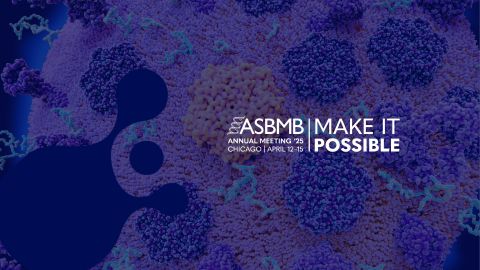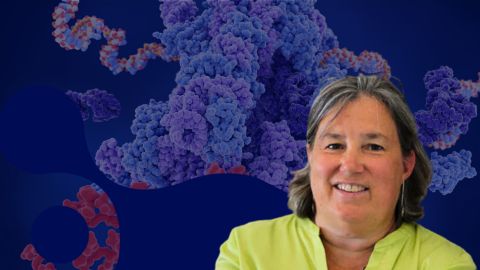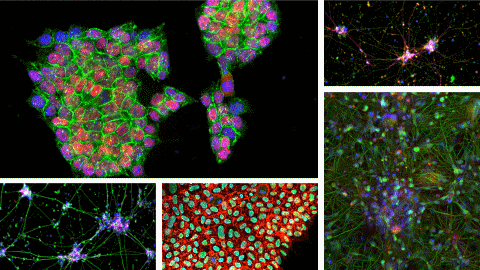JBC: The discovery of GABA in the brain
Some scientific discoveries land with a boom only to fizzle out and become a small blip — but there are times when this order is reversed. Such was the case with the discovery of gamma-aminobutyric acid, or GABA, in the brain.
 Eugene Roberts first reported in 1950 that GABA is a major amino compound in the brain.Scholarpedia
Eugene Roberts first reported in 1950 that GABA is a major amino compound in the brain.Scholarpedia
In a study published in 1950 in the Journal of Biological Chemistry preceded by a brief conference report, Eugene Roberts and Sam Frankel not only identified GABA as a major amine in the brain but also reported that it is produced and preferentially accumulates in that organ.
The initial response to the discovery was rather muted. In the five years following Roberts and Frankel’s report, which was accompanied by two other articleson GABA in the brain in the same JBC issue, according to PubMed only four additional studies of GABA in the brain were published.
Whether the research community was stunned into silence or this lackluster reaction simply reflected a lack of methods to quickly test GABA’s function is difficult to tell as we approach the 70-year mark of this finding. But we do know that at first no one seemed to have an inkling what GABA might be doing in the brain.
GABA’s activity in the brain was clarified in 1957 when researchers in Canada reported that an unknown compound having inhibitory activity on crayfish neurons was, in fact, GABA.
Baruch Kanner of Hebrew University Hadassah Medical School in Israel is a member of the JBC editorial board who studies GABA transporters.
“The GABA receptors mostly have an inhibitory input,” Kanner said, “and they are the major inhibitory receptors in the brain.”
It is now clear that Roberts and Frankel’s discovery marked a major milestone in the quest to unravel how neurotransmitters control brain activity.
Roberts’ research career and the story of GABA in many ways exemplify how discoveries and careers can be molded from humble and obscure beginnings.
Roberts’ personal history as a first-generation immigrant mirrors that of legions of researchers working in the United States. Born Evgeny Rabinowitch in 1920 in southern Russia, Roberts arrived in the U.S. in 1922, settling with his parents in Detroit. Awarded a scholarship from Wayne State University when he was only 16, Roberts graduated magna cum laude with a bachelor’s degree in chemistry in 1940. He went on to study biochemistry, earning a master’s in 1941 and a Ph.D. in 1943 from the University of Michigan in Ann Arbor.
After a short stint as an assistant head of the Manhattan Project’s inhalation section at the University of Rochester in New York, where he worked on the toxicology of uranium dusts, Roberts moved to Washington University in St. Louis in 1946. There, he became interested in amino acids in the brain, studying them in normal and neoplastic brain tissues.
This was at a time when “metabolomics” and “proteomics” would have been considered bizarre, futuristic terms, when even mass spectrometry and other tools now considered standard in analytical chemistry were far off on the horizon or too laborious and time-intensive for the task at hand. Instead, Roberts used paper chromatography and ninhydrin, a chemical dye that reacts with and stains primary amines, to isolate and identify free amino acids in mouse brain extracts.
As he meticulously analyzed these extracts, Roberts came across a ninhydrin-reactive compound whose migration on paper chromatograms did not match any known amine-containing compounds. What’s more, this mysterious amino acid–like metabolite apparently accumulated at much higher levels in the brain than in other tissues. Acid treatments of brain tissues didn’t increase these levels, suggesting that this amine exclusively occurs in the free form in the brain. Luckily, it was a lone wanderer, migrating far enough from other ninhydrin-staining compounds that Roberts and Frankel were able to extract it from strips cut from the chromatograms.
The researchers ran the strip-extracted compound along with carefully prepared reference standards in different solvent systems. A technique called the isotope derivative method developed by a colleague at Washington University, Sidney Udenfriend, helped them to home in on the unknown amine. Through this multipronged approach, Roberts and Frankel concluded that the brain-associated amine was GABA. Taking it a step further, using radioactive labeling of potential GABA precursors, the research duo demonstrated that brain tissues can convert another common cerebral amino acid, glutamic acid, to GABA.
The 1957 finding revealing that GABA inhibits the firing of action potentials in neurons presented another novelty. Other amine-containing neurotransmitters whose activities were known at the time, such as norepinephrine and acetylcholine, are activating (excitatory) ones.
The amino acid glycine also can inhibit brain neurotransmission, but Kanner pointed out, “GABA is clearly the most abundant one.”
Accordingly, researchers are interested in targeting the GABA system to manage epilepsy, which arises from over-excitation of the brain’s neurons. An initially promising avenue has been to prevent or slow reuptake of GABA once it is released into synapses by targeting its transporter, a strategy that has been successful for several brain neurotransmitters to manage other disorders.
“By inhibiting the GABA transporter, GABA is staying around (at the synapse) for a longer time,” Kanner said. “Then you get more inhibition, and that could be potentially an anti-epileptic drug because the inhibitory input becomes bigger.”
However, although they show promise, compounds that prevent GABA reuptake or stimulate its receptor have not yet made it beyond clinical trials, probably because of side effects, Kanner said.
These snags notwithstanding, GABA’s discovery has spurred many research activities; as of this writing, a search of PubMed for “gamma-aminobutyric acid” and “brain” returns about 30,000 papers on the topic.
These efforts include those of Kanner, who is studying the mechanism by which the GABA transporter operates. Kanner said he recalls meeting Roberts some 40 years ago and talking with him about his own research plans and findings on GABA.
“I think it must have been quite gratifying for him to see how (important) this molecule that he discovered in the brain is and how all the aspects of its action are being investigated,” Kanner said. “I think it’s wonderful that his central contribution will be remembered.”
Roberts died in 2016; he would have turned 100 in 2020.
This article originally appeared in the Journal of Biological Chemistry as a JBC Classic. It has been edited for ASBMB Today. Click to read more JBC Classics.
Enjoy reading ASBMB Today?
Become a member to receive the print edition four times a year and the digital edition monthly.
Learn moreGet the latest from ASBMB Today
Enter your email address, and we’ll send you a weekly email with recent articles, interviews and more.
Latest in Science
Science highlights or most popular articles

Unraveling oncogenesis: What makes cancer tick?
Learn about the ASBMB 2025 symposium on oncogenic hubs: chromatin regulatory and transcriptional complexes in cancer.

Exploring lipid metabolism: A journey through time and innovation
Recent lipid metabolism research has unveiled critical insights into lipid–protein interactions, offering potential therapeutic targets for metabolic and neurodegenerative diseases. Check out the latest in lipid science at the ASBMB annual meeting.

Melissa Moore to speak at ASBMB 2025
Richard Silverman and Melissa Moore are the featured speakers at the ASBMB annual meeting to be held April 12-15 in Chicago.

A new kind of stem cell is revolutionizing regenerative medicine
Induced pluripotent stem cells are paving the way for personalized treatments to diabetes, vision loss and more. However, scientists still face hurdles such as strict regulations, scalability, cell longevity and immune rejection.

Engineering the future with synthetic biology
Learn about the ASBMB 2025 symposium on synthetic biology, featuring applications to better human and environmental health.

Scientists find bacterial ‘Achilles’ heel’ to combat antibiotic resistance
Alejandro Vila, an ASBMB Breakthroughs speaker, discussed his work on metallo-β-lactamase enzymes and their dependence on zinc.

